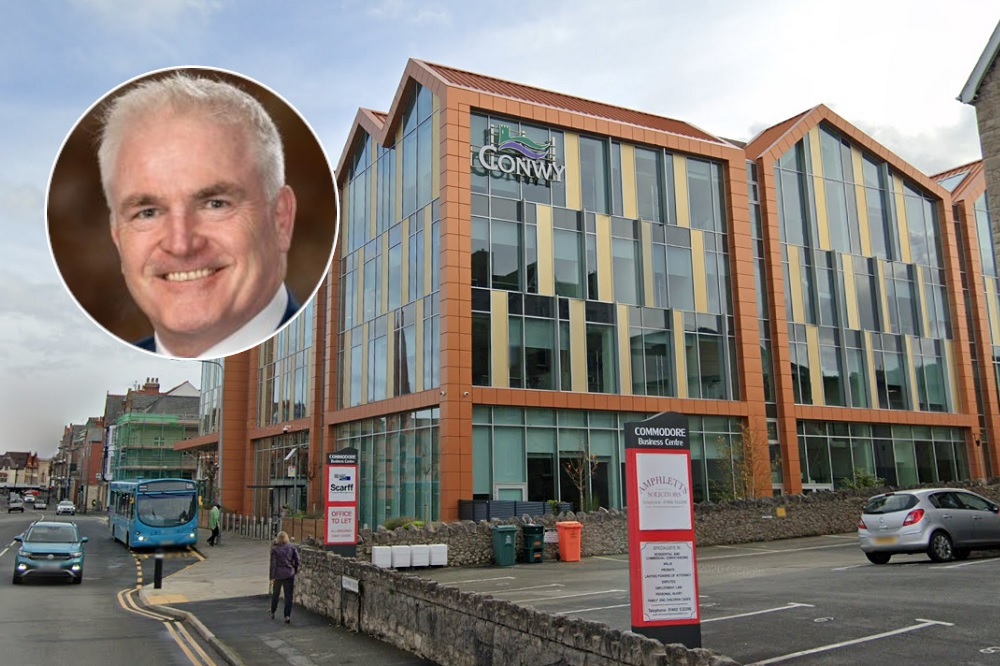Welsh Government accused of short-changing council by £210 million

Richard Evans, local democracy reporter
A council leader has slammed the Welsh Government funding formula used to calculate how much money the local authorities receive annually, claiming his council has been short-changed by more than £210m in seven years.
Conwy Council leader Cllr Charlie McCoubrey says the amount of money given to Conwy in its local government settlement is not enough, arguing it compares drastically unfavourably to the sums received by Gwynedd and Denbighshire.
In December both Conwy and Gwynedd came bottom of the local government settlement table of 22 Welsh authorities with just a 2% budget rise.
Consequently, Conwy then upped council tax by 9.67% this year, cutting frontline service budgets by 10% and even school budgets by 5%.
Cllr McCoubrey says Conwy’s sum amounts to less than an extra £4m in 2024/25, despite teacher and council staff pay increases of £12m, inflation, and rising costs.
Whilst Gwynedd was bottom of the table with Conwy, also receiving just a 2% rise, Denbighshire received a 3.7% increase, the highest percentage increase in North Wales.
Newport in Gwent in south Wales had the highest settlement in the country, receiving a 4.7% increase.
Flintshire received the third lowest rise in Wales at 2.2%, Anglesey an additional 2.5%, and Wrexham 3.2%.
South Wales councils Cardiff and Swansea received increases of 4.1% and 3.8% respectively, and the average increase across Wales was 3.1%.
High social care costs
But Conwy has one of the oldest populations in the UK, with high social care costs, and is facing a funding gap of around £25m next year.
Cllr McCoubrey is unhappy with the figures, complaining the county has been short-changed by as much as £210m in the last seven years alone compared to Denbighshire.
Conwy’s leader says Denbighshire received £2,080 per head in 2024/25 compared to Conwy’s £1,781, a difference of £299 per person equating to a 16.8% higher payment.
He added that neighbours Gwynedd received £1,984, a difference of £203, equating to a gap of 11.4%.
“The population of Conwy is around 115,000, so per capita funding, at the Denbighshire level, having been adjusted for our tax base, would be in the region of an additional £30m per annum for Conwy, or around £20m more if adjusted in line with Gwynedd’s level,” he said.
“These figures illustrate that the current funding formula used by Welsh Government to allocate funding to local authorities are outdated and no longer fit for purpose.
“In particular, it completely underestimates the resources needed to provide appropriate care to an aging population. Conwy taxpayers are being short-changed, and I would urge all our elected representatives to work with me to secure a fairer deal for Conwy residents.”
He added: “It is £30m a year (less). I’ve been a councillor since 2017, so it is seven years. That’s in excess of £210m. Clearly losing that sum of money means it is much more difficult to have a balanced budget and provide services that people want.
“Any drop in your budget of that magnitude means less services, so, for example, public toilets, things like that. The amount we can afford is constrained by the amount of money we have. I don’t think it is fair at all.
“The funding formula isn’t fit for purpose. It should recognise need, and it doesn’t, and we have the second oldest population of over 65s in Conwy. It is 27% (of the population). That comes with a cost.”
Agreed
A Welsh Government spokeswoman responded: “The local government funding formula is agreed in partnership with local government, through the distribution and finance sub-groups.
“The funding is distributed transparently and based on relative need, using a formula which takes account of a wealth of information on the demographic, physical, economic, and social characteristics of local authorities. The largest drivers of service expenditure are population levels, deprivation levels, and sparsity.
“There is no evidence that any authority with particular geographical or social characteristics is disadvantaged by the local government funding formula.”
Support our Nation today
For the price of a cup of coffee a month you can help us create an independent, not-for-profit, national news service for the people of Wales, by the people of Wales.





Says the council that’s conned its own constituents by building that monstrosity whilst Bodlondeb still stands empty, plus paying £20k a month for storing facilities that they can’t even use.
Do not confuse the percentage increase which is based on annual relative changes especially in population against the actual amount per person.
“we have the second oldest population of over 65s in Conwy. It is 27% (of the population).” Of those over 65, how many lived in Conway or Wales for the 10 years prior to reaching the age of 65?